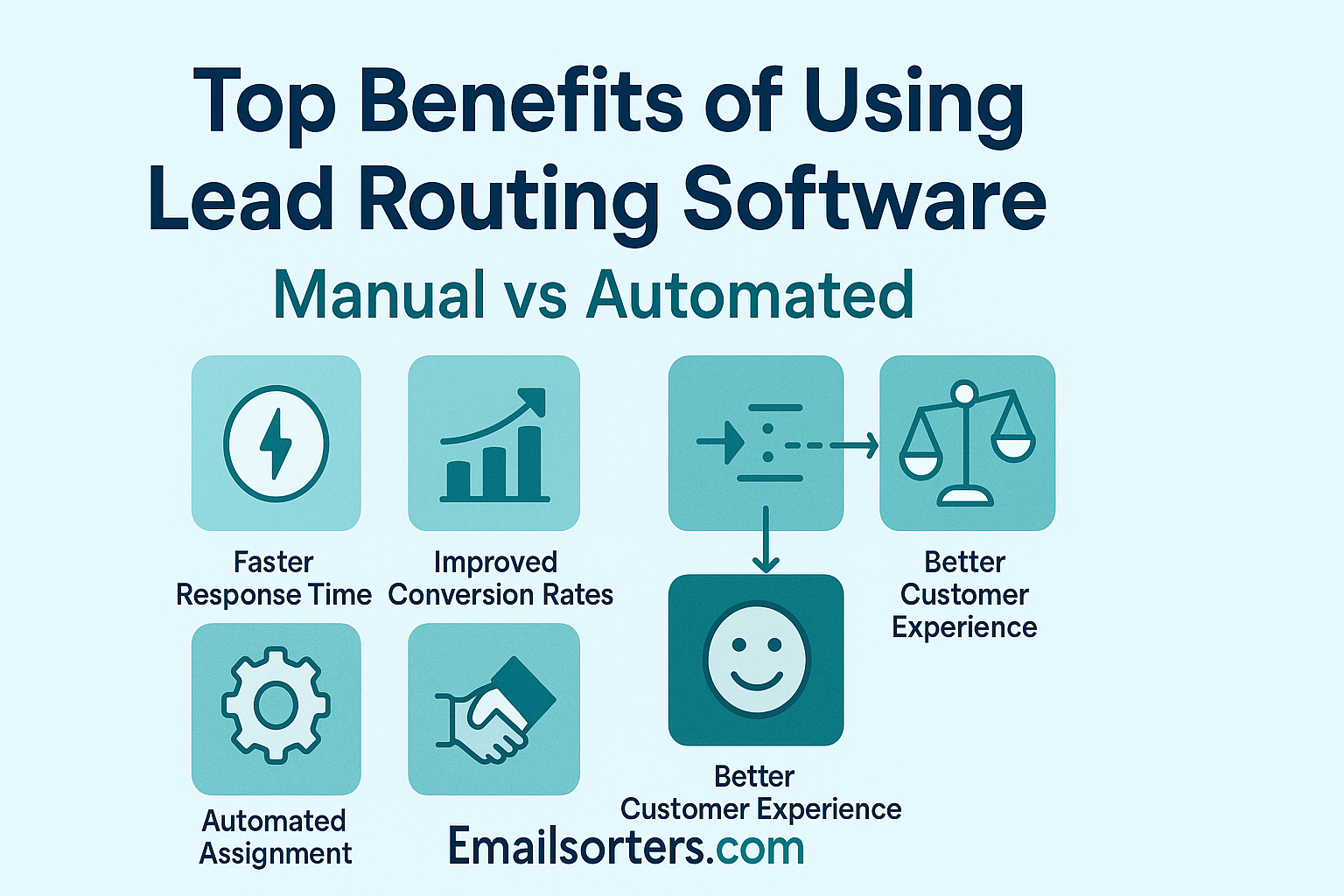In 2025, the sales landscape is more competitive and time-sensitive than ever. With rapid technological advancements and rising buyer expectations, businesses must be agile and efficient in managing leads. Traditional methods, like manual lead assignment or basic round-robin systems, struggle to keep up with today’s fast-paced market. Lead routing software offers a smarter, automated solution, ensuring leads reach the right sales representatives at the right time.
This blog post explores the top benefits of using lead routing software in 2025, showing how it enhances sales performance, speeds up response times, and improves customer experiences. Aimed at B2B marketers, sales managers, and CRM users, we’ll cover what lead routing software is, why 2025 is the ideal year to adopt it, and the specific advantages it brings to your sales strategy.
Why 2025 Is the Year of Smarter Lead Routing
The sales environment in 2025 is shaped by several trends that make lead routing software indispensable:
- AI in Sales: Artificial intelligence enhances personalization and efficiency in lead management, enabling smarter routing decisions.
- Buyer Expectations: Customers demand quick, tailored responses. Lead routing ensures leads connect with the right rep instantly.
- Fast Response Demands: Research shows leads contacted within 5 minutes are 8 times more likely to convert than those reached after 30 minutes (InsideSales).
- Data-Driven Decisions: Businesses rely on analytics for strategic insights. Lead routing software provides real-time reporting to optimize performance.
These trends highlight why 2025 is the perfect year to adopt automated lead routing, helping businesses stay competitive and meet evolving customer needs.
Top Benefits of Lead Routing Software
Here are the seven key benefits of lead routing software, each transforming your sales process:
1. Faster Response Times
Speed is critical in sales, and lead routing software excels at reducing response times. By automating lead assignments, reps can engage prospects almost instantly. Tools like Cirrus Insight enable leads to book directly onto a rep’s calendar in real-time, ensuring no hot lead goes cold. Studies suggest that quick follow-ups can increase conversions by up to 8x, making this a game-changer for 2025 sales teams.
2. Increased Sales Team Productivity
Manual lead assignment is time-consuming and error-prone, diverting reps from selling. Lead routing software automates this process, freeing up time for closing deals. Traction Complete reports that automation can eliminate manual errors and cut lead qualification time by 31% (Traction Complete). This boost in efficiency lets sales teams focus on what they do best.
3. Better Lead Qualification & Distribution
Lead routing software uses smart rules or AI to qualify and distribute leads to the most suitable rep. Factors like expertise, workload, or past performance are considered, ensuring optimal matches. Default’s customizable routing rules, for example, assign leads based on geography or lead score, improving conversion rates by connecting leads with reps best equipped to close them (Default).
4. Enhanced Customer Experience
Quick, relevant interactions build trust with prospects. Lead routing software ensures leads reach the right rep promptly, creating personalized experiences. This speed and accuracy enhance customer satisfaction, fostering long-term relationships. By meeting buyer expectations for fast, tailored responses, businesses can differentiate themselves in a crowded market.
5. Scalable Lead Management for Growth
As businesses expand, lead volumes grow, challenging manual systems. Lead routing software scales effortlessly, handling high volumes without performance issues. Default’s platform, for instance, manages large lead batches efficiently, avoiding processing limits (Default). This scalability ensures your sales process remains smooth as your business grows.
6. Integration with CRM and Marketing Tools
Seamless integration with CRMs like Salesforce, HubSpot, or Marketo is a hallmark of lead routing software. This connectivity keeps lead data consistent across platforms, reducing silos and enhancing collaboration. Pipedrive’s automatic assignment feature, for example, syncs with its CRM to streamline workflows, ensuring reps have up-to-date information (Pipedrive).
7. Real-Time Reporting and Analytics
Lead routing software provides real-time insights into lead performance, routing effectiveness, and team productivity. ClickPoint’s interactive sales scoreboards, for instance, allow managers to monitor achievements and identify underperforming areas instantly (ClickPoint). These analytics empower data-driven decisions, optimizing lead strategies for better outcomes.
Manual Lead Routing vs. Automated – Why It Matters
Manual lead routing, where managers assign leads based on judgment or rotation, works for small teams but falters as businesses scale. It’s slow, error-prone, and risks misassigning or losing leads. Automated lead routing, by contrast, uses rules or AI for consistent, rapid assignments. It handles complex logic—like matching leads to reps based on multiple criteria—something manual processes can’t match.
In 2025’s fast-paced sales environment, automation is essential. It minimizes delays, reduces errors, and aligns with the demand for speed and precision, ensuring no opportunity is missed.
Conclusion
Lead routing software is a transformative tool for 2025, offering benefits like faster response times, increased productivity, better lead qualification, enhanced customer experiences, scalable management, CRM integration, and real-time analytics. These advantages help businesses stay competitive in a dynamic market, meeting buyer expectations and driving revenue growth.




